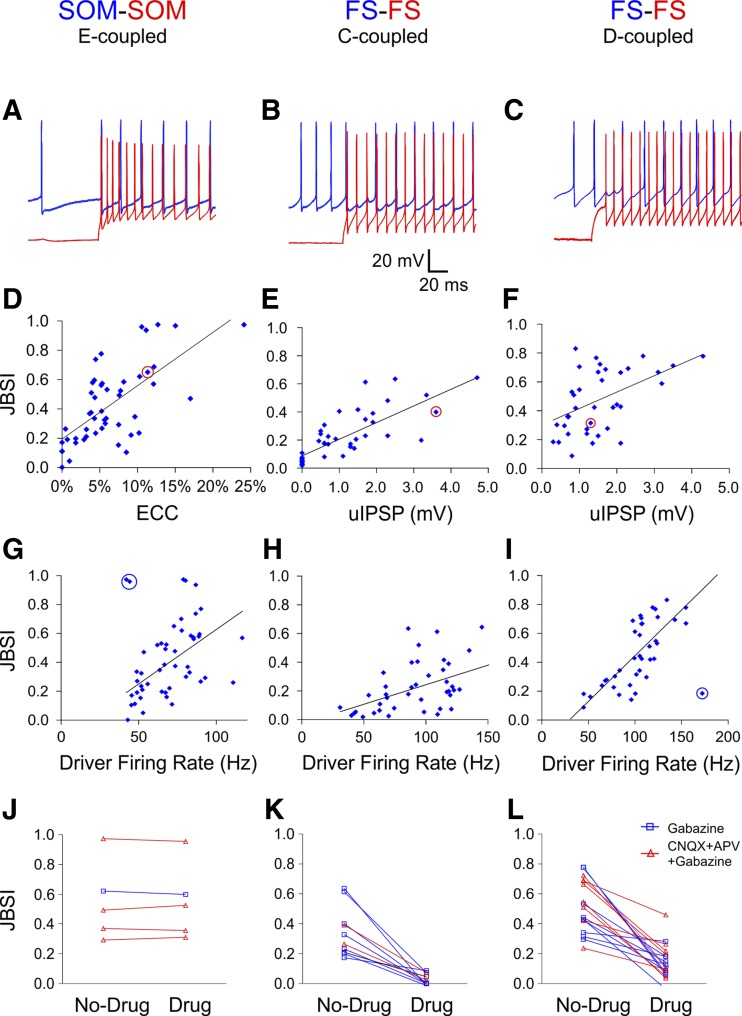Fig. 4.
Interneuron synchrony depends on electrical synapses, chemical synapses, and firing rate. A–C: to test for firing synchrony, paired spike trains were elicited by suprathreshold current steps in the driver cell (red traces) and by tonic suprathreshold depolarization in the follower cell (blue traces). D–F: strength of synchrony (as quantified by the JBSI) was well correlated with the electrical coupling coefficient (ECC) in E-coupled SOM pairs (r2 = 0.45) and with the unitary IPSP (uIPSP) in C-coupled FS pairs (r2 = 0.58) and not as well correlated with the uIPSP in D-coupled FS pairs (r2 = 0.27). Data points corresponding to the example pairs are circled in red. G–I: the JBSI correlated with the firing rate of the driver cell (r2 = 0.29, 0.20, and 0.58, respectively), but not the follower cell (not shown). The regression lines and correlation coefficients were calculated after exclusion of the 3 outlier data points circled in blue in G and I. J–L: blocking GABAA receptors, with or without blocking ionotropic glutamate receptors, had no effect on synchrony between E-coupled SOM pairs (J), abolished synchrony between C-coupled FS pairs (K), and suppressed but did not abolish synchrony between D-coupled FS pairs (L). CNQX, 6-cyano-7-nitroquinoxaline-2,3-dione disodium; APV, d-(−)-2-amino-5-phosphonopentanoic acid.

